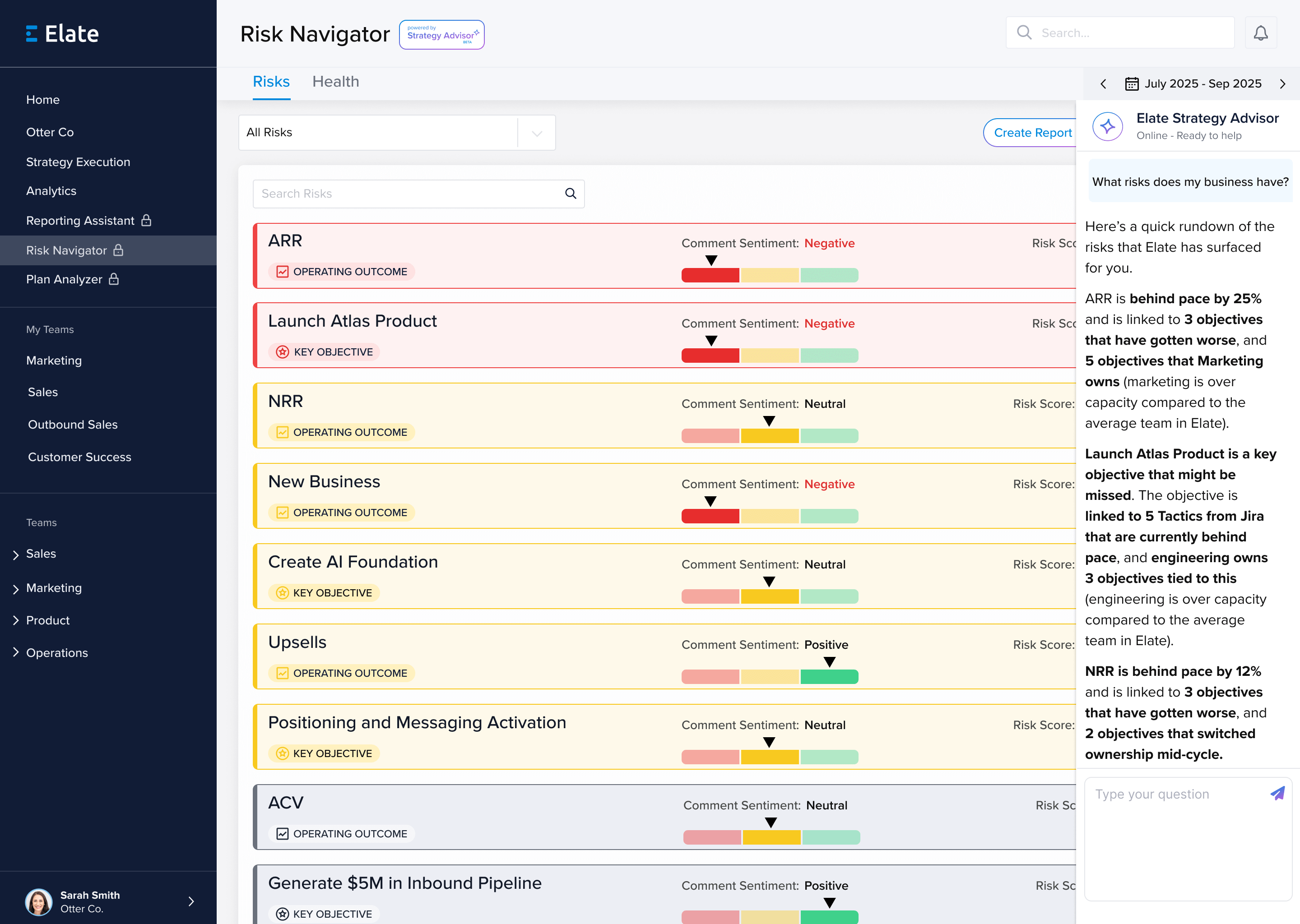Objectives and Key Results are commonly known as OKRs and are a tool used by organizations to create and set goals in a collaborative way. OKRs give those organizations a way to measure results to ensure they are working. When your organization puts an OKR strategy in place, it allows you to track progress, ensure alignment with your goals, and cultivate an environment of creating measurable goals. When you create OKRs, you are providing direction for your entire organization, which makes it critical that you implement them correctly.
When you are thinking about how to do OKRs, you want to determine the top three items you want your organization to achieve next year. You should provide an opportunity to everyone in the organization to give input. You should consider gathering all your stakeholders responsible for the strategy and then obtain their input on the priorities. It is important that these goals are in alignment with the mission of the organization. This process can be captured in several ways, including a whiteboard, documents, and even post-its.
Using OKR product goals is an ideal way to create one framework that includes a vision that is qualitative and provides metrics to measure success. To implement these goals effectively, you must create your objectives from the top three items you want to achieve. From there, you create results that can be measured to determine if you have met the objective. These objectives are focused and measurable over the length of a quarter with the intention of moving on to new focuses. However, during the entirety of the quarter, you are focused on this one (or three) objectives. It is imperative to remember that these objectives do not encompass everything the organization does, just what is most important to the team working to achieve the objective.
OKR Examples
A key performance indicator (KPI) helps an organization evaluate performance over time. It can be the organization as a whole, an individual, or a project. The major difference between OKR vs KPI is that a KPI can be any measurement the organization uses to measure progress and success. An OKR methodology, on the other hand, is measuring large goals focused on the big picture for the organization. The intention of an OKR is to propel the organization forward in some way. It gives them an action. A KPI is a measurement after the actions have been taken.
Some primary OKR examples are:
You create an objective, such as Increase revenue by a set percentage, such as 50 percent.
You must create key results that are actionable, which allow you to increase revenue and when you meet the result. For example, a key result could be turning 75 leads into customers. Another key result to consider is the increase the number of leads acquired via marketing by 15 percent. The last key result may be to improve customer retention by 75 percent. As you work towards these results, you are seeing improvement in your objective.
Product OKRs Examples
Product team OKRs are important because the project managers must focus heavily on tangible indicators. While it is important to ensure that you are reducing your churn rate, there are other concerns to which project managers need to pay attention. The project and product managers should focus on measuring the ongoing work. Some potential product OKRs examples are the onboarding steps and the percentage of completing those steps. You may also want to consider the frequency of usage while paying attention to the pattern of use for all products.
Project manager OKR examples may focus on the delivery of your product to customers. This can include objectives such as understanding the needs of your current customers and incorporate that understanding into new contracts. The key results associated with the objective can include making sure there are no major problems for each customer. Another key result may include that every feature within the product is useful to the customers and that they are using the features. The final key result could be putting a feedback loop in place for every customer to ensure they are satisfied.
Another OKR example is the objective to successfully release updated versions of the product. The key results may include receiving customer reviews of the product, obtaining a specific set of new account creations, and increasing the number of conversions from trial to paid use.
Marketing OKRs Examples
Teams often find it difficult to create content marketing OKRs, as well as regular marketing OKRs, and sometimes it is challenging to create OKRs that meet all of your needs. In an effort to assist marketing teams with effective OKR creation, here are some marketing OKR examples. It is important to remember that these are examples to help but most likely will not cover all of your marketing needs.
Some OKR examples of marketing for you to consider are:
When thinking about content marketing, an objective could be to launch or relaunch a blog for the organization. Key results could be double the number of social media followers, increase the number of subscribers to the blog by some amount, and lastly release content articles to industry publications.
Another objective could be to improve search engine optimization (SEO) rates across your entire website. Key results for this include adding many more referral links, increasing referral traffic, and finding your website in the top spot for your top five keywords relevant to your organization or product.
You may want to consider increasing the engagement of customers on your website as an objective. This includes key results of doubling the average amount of time a customer spends on your website, increasing the number of webpages a customer views while on your website, and reducing the bounce rate on your website.
OKR For Brand
When it comes to your organization and encouraging customer interaction, social media is king. It is important for social media managers to focus on their social media presence. In this case, you need to be where you will find your customers, and customers are on social media. There are great ways to handle social media, but it needs to be done the right way. OKR for brand is an ideal way to make sure you have gotten it right.
To help you out on your journey, social media OKR examples are:
Your number one objective should be to increase your social media presence and audience. You also want to select some social media platforms that matter to your organization. There are many different platforms, and you may not be able to conquer them all, so pick the ones that are important to your organization. Once you select those, increase subscribers by 10,000. Another key result is to increase your number of views on Quora, the question and answer website.
Another key objective for your organization is to create a brand for your organization. Key results for this objective includes launching new ad campaigns, reach over one million viewers with those new campaigns, and to partner your organization with various conferences.
Sales Marketing OKRs
Sales marketing OKRs are important because they are critical to setting sales goals that are streamlined and can simplify methods for increasing sales. In this case, setting individual goals may drive towards the overall goal of the team.
Possible sales marketing OKRs include:
The objective of increasing quarterly revenue by a set percentage, perhaps 20 percent over the previous quarter. Since this goal is set around a quarter, you may want to list the specific quarter being targeted. Key results include having a set amount of sales in dollars during the launch of a new product. You may include an up-sell for a specific percentage, perhaps five percent, of existing customers. You may also want to reduce your number of days within your sales cycle.
Another possible objective includes a focus on efficient processes for sales. This could be to streamline your analytics in an effort to have more visibility for your data. The keys results may include selecting one data management and recordation tool. Then, migrate all of your data to that tool and train your staff on the tool. This leads to your last key result, which is to decrease the amount of time spent on the administration and reporting of the data.
OKR Examples For Technology
When you want to grow your company, it is important to ensure your technology grows with you. To do this properly, you should consider incorporating OKR examples for technology into your OKR methodology. Some sample tech OKR ideas are:
An objective to increase data security is a top OKR. These include key results of every person on the team having comprehensive security training, increasing the frequency you back up data, and having zero security breaches.
Another objective should be a reduction in support ticket requests. Key results include creating a list of the top customer issues, creating and encouraging self-help content for customers to address the top issues.
Another objective is to improve QA. The key results include reducing showstoppers to zero within a week of the release of a new product or update. Another key result is to unit test at least 50 percent of the code and has less than 5 bugs reported by the users from each release.











